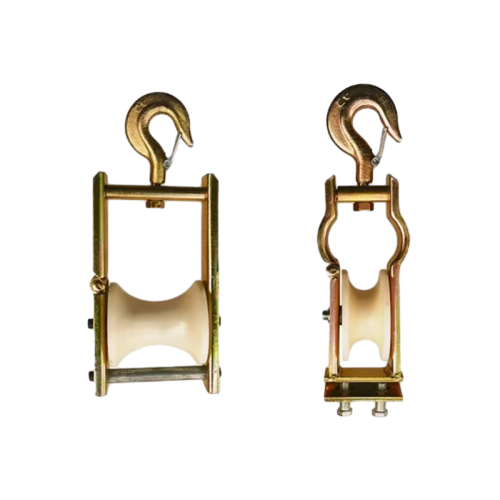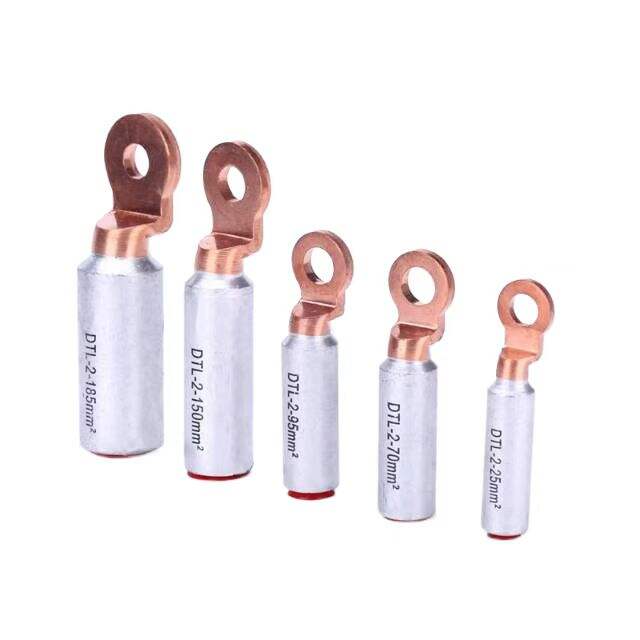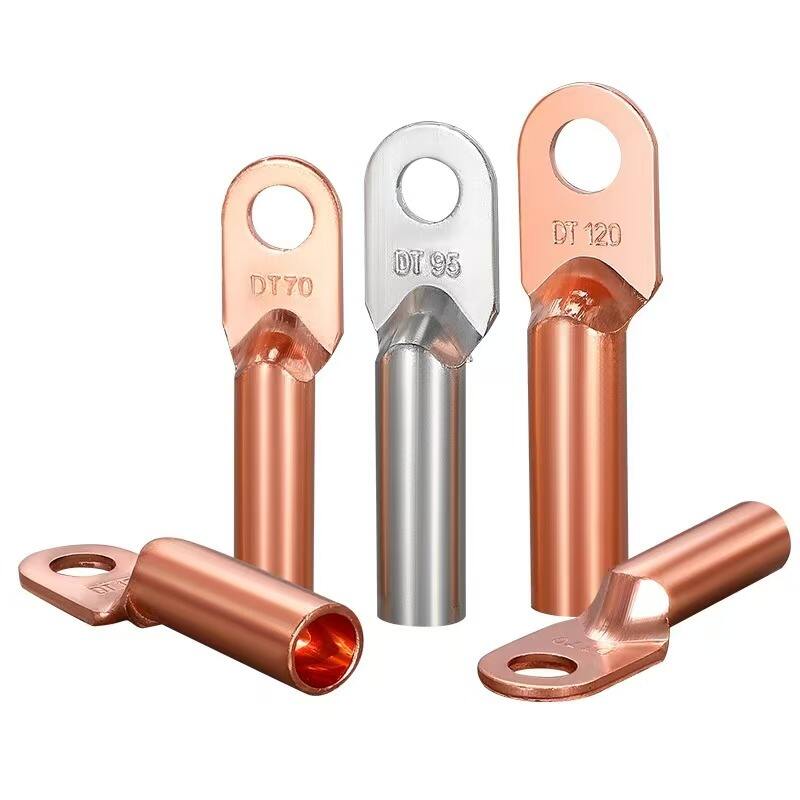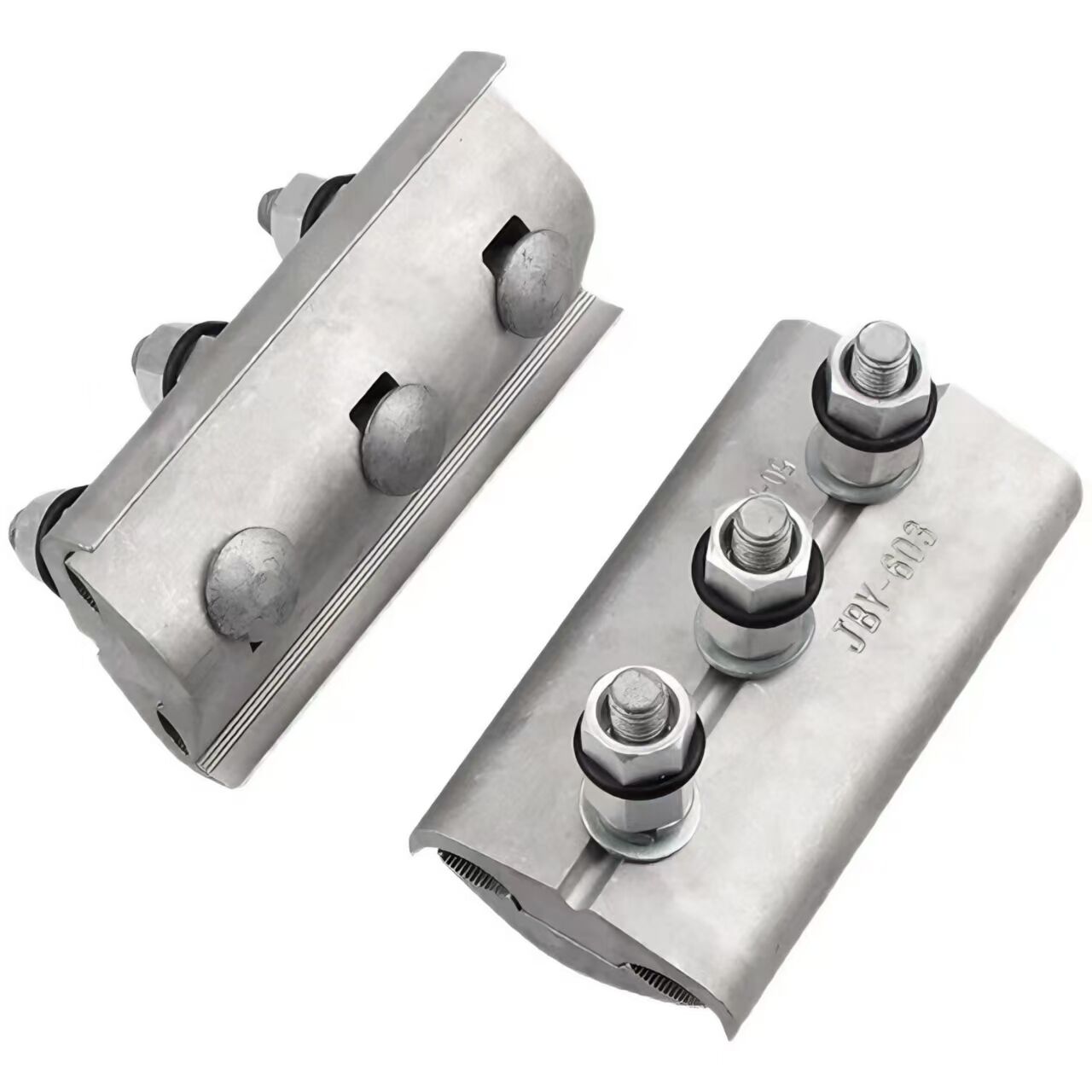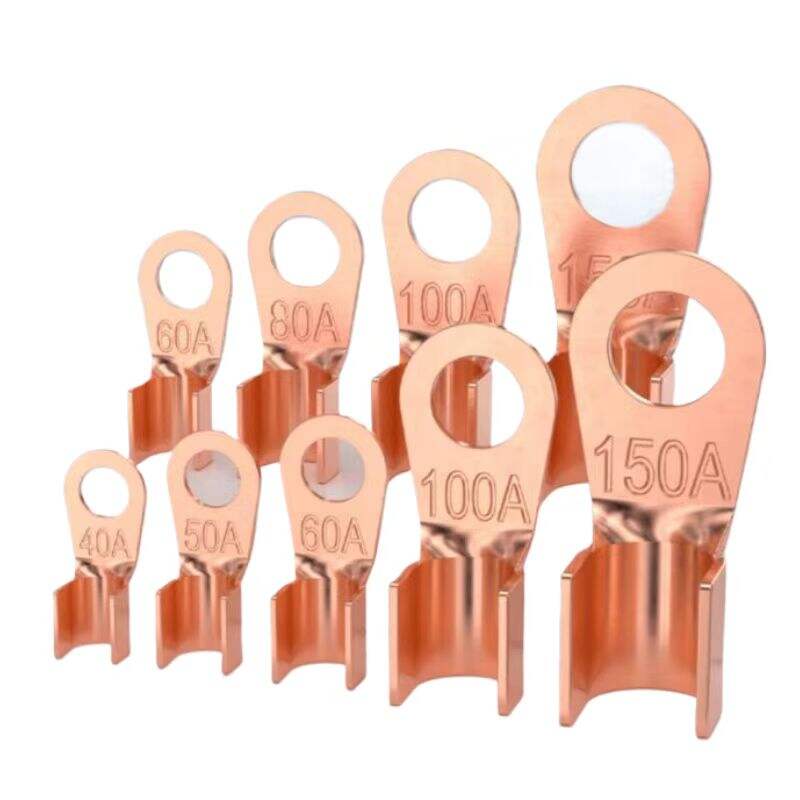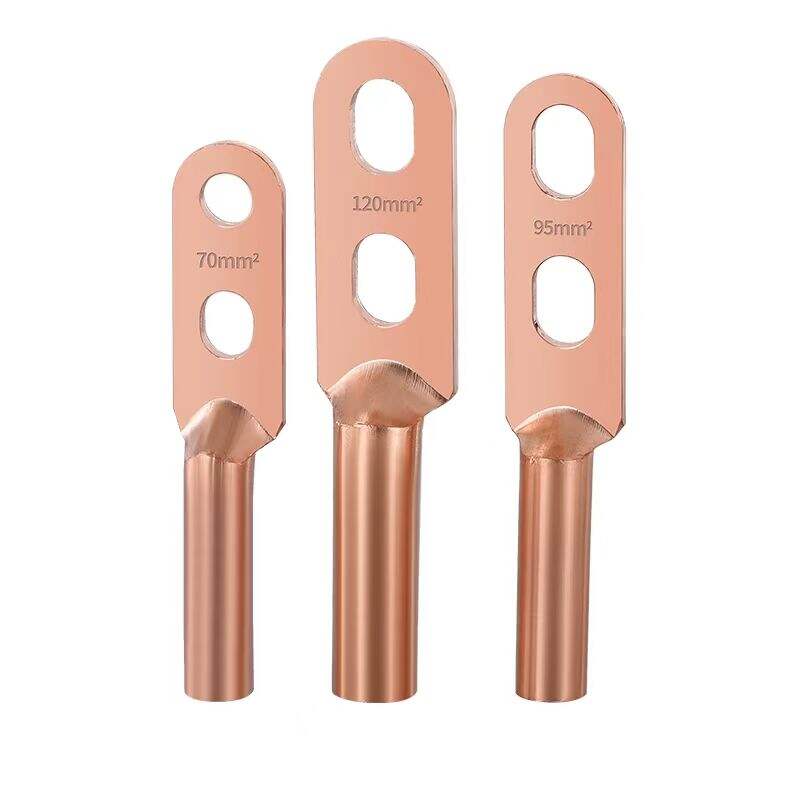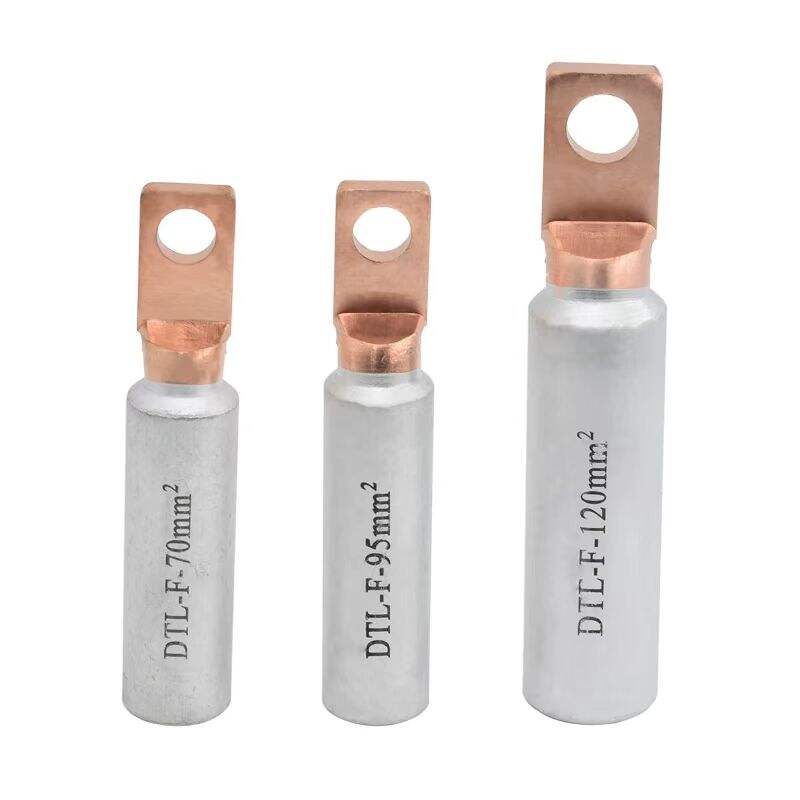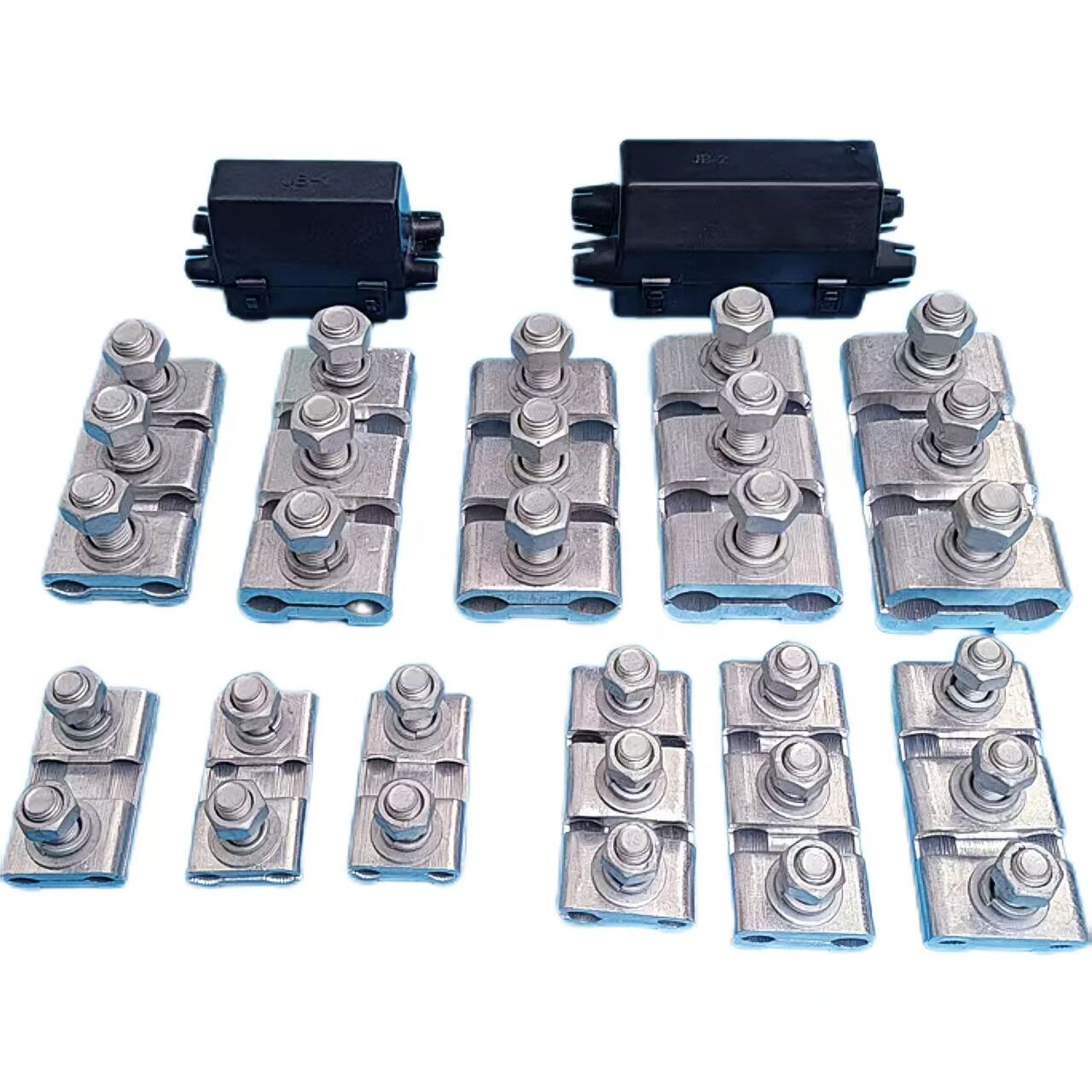1. Sheave Material
High-Strength Nylon: Offers excellent wear resistance and insulation, suitable for insulated conductors or communication cables to prevent damage to the cable sheath. Ideal for low-voltage or sensitive cable installations where electrical isolation and gentle cable handling are required.
Aluminum Alloy/Steel: Provides high load-bearing capacity, suitable for large-diameter power cables or heavy-duty scenarios. Resistant to wear and corrosion, making it durable for high-tension power transmission projects.
2. Bracket Material
Predominantly made of metal (e.g., steel, aluminum alloy), with some lightweight designs using high-strength engineering plastics to balance stability and portability. This makes the pulley adaptable to both rugged outdoor environments and projects requiring easy transportation.
3. Anti-Jump Sheave Groove
Features a raised edge design to prevent cables from derailing during stringing, enhancing safety and reducing the risk of operational disruptions. The groove profile is optimized to maintain cable alignment even in sharp turns or high-tension applications.
4. Dual/Multi-Sheave Combinations
Used for large-diameter cables or scenarios requiring directional changes (e.g., corners, obstacle crossings). The multi-sheave design distributes tension evenly, minimizing cable wear and facilitating smooth guidance through complex routes.
5. Foldable/Detachable Brackets
Designed for easy transportation and storage, making it suitable for field operations or construction in complex terrains. The modular structure allows quick assembly and disassembly, saving time and effort in logistically challenging projects.
6. Sheave Diameter Range
Small Communication Pulleys: 50–100 mm in diameter, suitable for cables with cross-sections of several mm² .
Large Power Pulleys: 300–800 mm in diameter, compatible with cables up to thousands of mm² . This wide range ensures adaptability across diverse industry needs.
7. Load-Bearing Capacity
Ranges from tens of kilograms to several tons, accommodating different cable weights and tension requirements. Heavy-duty models are engineered for power grid projects with thick steel strands, while lightweight models serve low-load communication or residential wiring tasks.
8. Installation Methods
Suspended Type: Hook or bolt-fixed for mounting on utility poles or structures.
Ground-Supported Type: Stable base for use in cable trenches or flat surfaces.
Track-Mounted Type: Slides along rails for tunnel or conduit applications.
This versatility allows deployment in various environments, from overhead power lines to underground cable systems.
9. High-Precision Bearings
Equipped with ball bearings or needle bearings to minimize rotational resistance, ensuring smooth cable sliding during stringing. Reduces friction-generated heat and mechanical wear, prolonging both the pulley and cable lifespan.
10. Self-Lubricating Design
Some models feature built-in lubricating grease or self-lubricating materials, reducing maintenance frequency and enhancing durability in long-term outdoor use. This is particularly beneficial for remote or hard-to-access installations where regular upkeep is challenging.
 E-mail:
E-mail:




